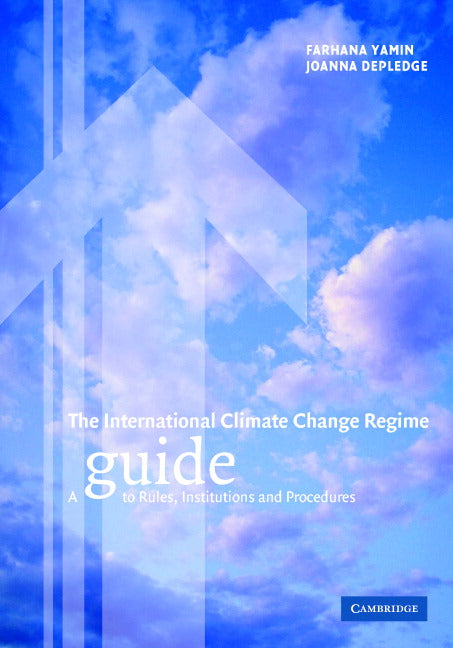Freshly Printed - allow 8 days lead
Couldn't load pickup availability
The International Climate Change Regime
A Guide to Rules, Institutions and Procedures
Presents a detailed description and analysis of the international climate change regime established in 1992.
Farhana Yamin (Author), Joanna Depledge (Author)
9780521840897, Cambridge University Press
Hardback, published 9 December 2004
730 pages, 49 colour illus. 27 tables
25.5 x 18.2 x 4 cm, 1.599 kg
'In aiming for a complete and therefore 'neutral' view of the UNFCC, Yamin and Depledge provide more than a description of the related institutions and processes of the regime. First, they increase the access of those outside of the regime by helping them to navigate through a set of abbreviations, graphs, and specific terms. Second, they establish a starting point for researchers to inquire about certain rules or procedures, make future projections, or seek to apply the same problematic areas of issue - that is, to identify areas of potential research interest and carry out further analyses.' Environment and Planning C
This book presents a comprehensive, authoritative and independent account of the rules, institutions and procedures governing the international climate change regime. Its detailed yet user-friendly description and analysis covers the UN Framework Convention on Climate Change, the Kyoto Protocol, and all decisions taken by the Conference of the Parties up to 2003, including the landmark Marrakesh Accords. Mitigation commitments, adaptation, the flexibility mechanisms, reporting and review, compliance, education and public awareness, technology transfer, financial assistance and climate research are just some of the areas that are reviewed. The book also explains how the regime works, including a discussion of its political coalitions, institutional structure, negotiation process, administrative base, and linkages with other international regimes. In short, this book is the only current work that covers all areas of the climate change regime in such depth, yet in such a uniquely accessible and objective way.
Foreword
Preface and acknowledgments
1. Introduction
2. Overview
3. Regime participants
4. Objective and principles
5. Mitigation commitments
6. Flexibility mechanisms
7. Research, systematic observation, education and public awareness
8. Adaptation
9. Impacts of response measures
10. Finance, technology and capacity-building
11. Reporting and review
12. Compliance
13. Institutions
14. The negotiation process
15. Scientific and technical input
16. Administering the regime
17. Linkages
18. Evolution of the regime
19. Conclusion: taking stock and moving forward
Appendix I: List of parties, their groups and key statistics
Appendix II: Annex 1 - parties' emissions and projections
Appendix III: Tables of articles, COP decisions and issues
Bibliography.
Subject Areas: Environmental science, engineering & technology [TQ], The environment [RN], Meteorology & climatology [RBP], International environmental law [LBBP], Political science & theory [JPA]


